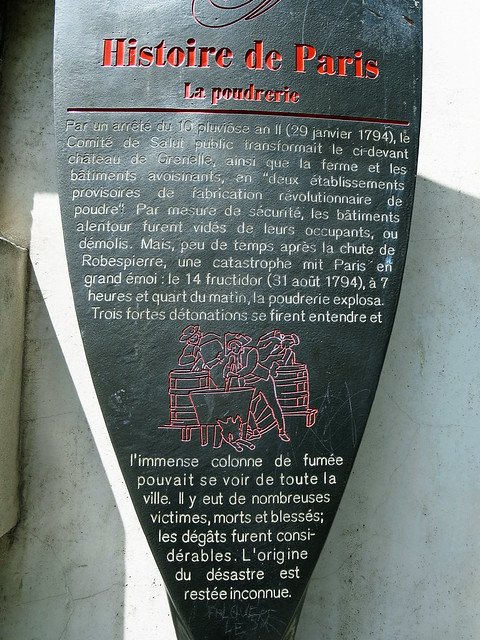La poudrerie. Par un arrêté du 10 pluviôse an II (29 janvier 1794), le Comité de Salut public transformait le ce devant château de Grenelle, ainsi que la ferme et les bâtiments avoisinants, en “deux établissements provisoires de fabrication révolutionnaire de poudre”. Par mesure de sécurité, les bâtiments alentour furent vidés de leurs occupants, ou démolis. Mais, peu de temps après la chute de Robespierre, un catastrophe mit Paris en grand émoi : le 14 fructidor (31 août 1794), à 7 heures et quart du matin, la poudrerie explosa. Trois fortes détonations se firent entendre et l’immense colonne de fumée pouvait se voir de toute la ville. Il y eut de nombreuses victimes, morts et blessés; les dégâts furent considérables. L’origine du désastre est restée inconnue.
16 Place Dupleix, Paris
Google Streetview
OpenStreetMap
Subjects
None identified yet. Subjects are curated by hand so please bear with us.

